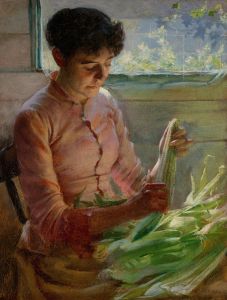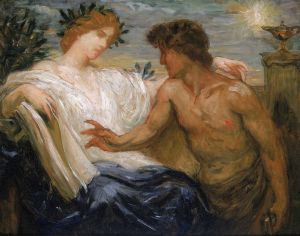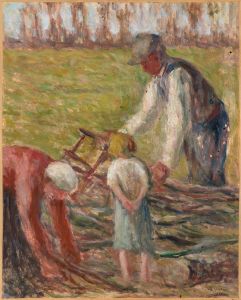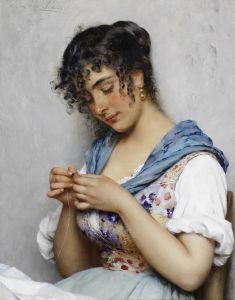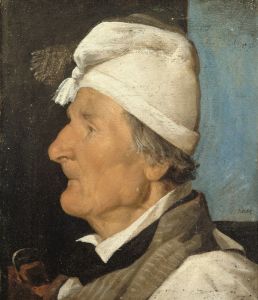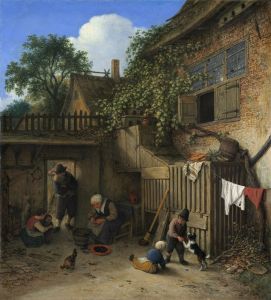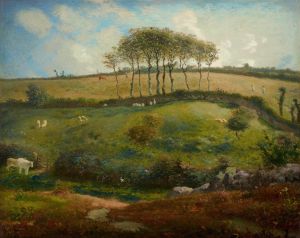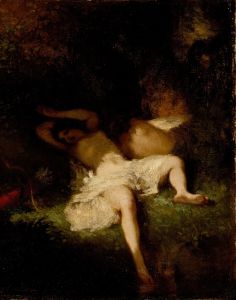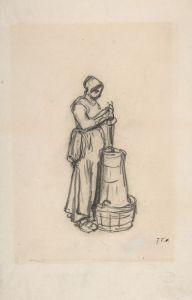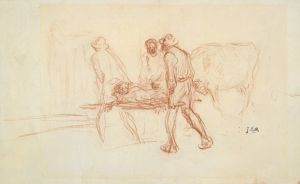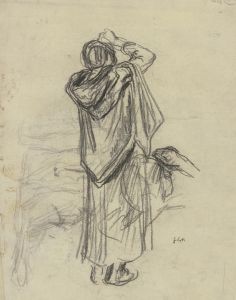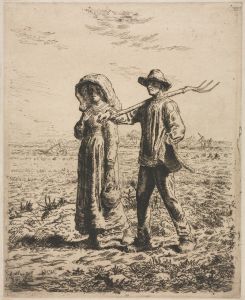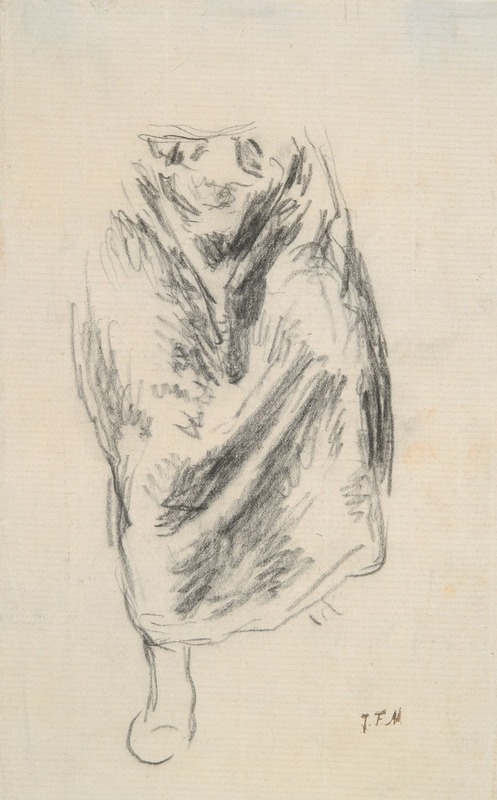
Study for ‘Bergere Assise’
A hand-painted replica of Jean-François Millet’s masterpiece Study for ‘Bergere Assise’, meticulously crafted by professional artists to capture the true essence of the original. Each piece is created with museum-quality canvas and rare mineral pigments, carefully painted by experienced artists with delicate brushstrokes and rich, layered colors to perfectly recreate the texture of the original artwork. Unlike machine-printed reproductions, this hand-painted version brings the painting to life, infused with the artist’s emotions and skill in every stroke. Whether for personal collection or home decoration, it instantly elevates the artistic atmosphere of any space.
Jean-François Millet's "Study for ‘Bergère Assise’" is a notable work that reflects the artist's dedication to portraying rural life and the dignity of the peasant class. Millet, a prominent figure in the Barbizon School, was renowned for his realistic depictions of rural laborers and landscapes, and this study is a testament to his focus on the everyday lives of peasants.
The study is a preparatory work for a larger composition, showcasing Millet's process of developing his ideas and compositions. In this piece, Millet captures the essence of a shepherdess seated, likely taking a moment of rest from her duties. The figure is depicted with a sense of calm and introspection, embodying the quiet strength and resilience of rural workers that Millet often sought to convey in his art.
Millet's technique in this study involves a careful attention to detail and a subtle use of light and shadow to create depth and dimension. The simplicity of the composition, with its focus on the solitary figure, allows viewers to connect with the subject on a personal level, emphasizing the humanity and individuality of the shepherdess. This approach is characteristic of Millet's work, where he often highlighted the nobility of peasant life without romanticizing it.
The study is executed with a delicate touch, using materials that were typical for preparatory works of the time. While the exact medium of this particular study is not specified, Millet commonly used charcoal, graphite, or chalk for his sketches and studies. These materials allowed him to quickly capture the essence of his subjects and experiment with composition and form before committing to a final painting.
Millet's focus on rural themes was influenced by his own upbringing in a farming community in Normandy, France. His personal experiences and observations of rural life informed his artistic vision and fueled his desire to depict the realities of peasant life with honesty and empathy. This connection to his subjects is evident in "Study for ‘Bergère Assise’," where the shepherdess is portrayed with dignity and respect.
The study serves as an important example of Millet's contribution to the Realist movement, which sought to depict everyday life with authenticity and without idealization. His work, including this study, had a significant impact on later artists and movements, inspiring figures such as Vincent van Gogh, who admired Millet's ability to capture the spirit of rural life.
Overall, "Study for ‘Bergère Assise’" is a reflection of Jean-François Millet's commitment to portraying the lives of rural workers with sincerity and depth. It stands as a testament to his skill as an artist and his dedication to capturing the essence of the human experience through the lens of rural life.





